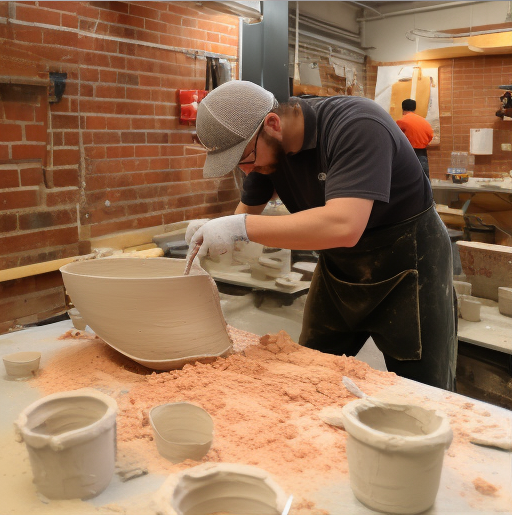Hello, fellow crafters and creators! After having a few questions comparing these two products, I wanted to write an article to cover the differences, and when to use each of these two awesome, but very different plasters. Whether you're sculpting a masterpiece, creating a cosplay prop, or working on a restoration project, understanding the differences between these two materials can be a game changer.
The Lowdown on USG Ultracal 30
First up is Ultracal 30. This is like the Swiss Army knife in your crafting toolbox when it comes to precision and durability.
What Makes Ultracal 30 Special?
- It's super strong and absorbs very little moisture.
- Ideal for capturing those tiny, intricate details.
- Once set, it's as hard as a rock, making your creations last longer.
5 Ways I recommend Ultracal 30:
- Architectural Models: When you're building a mini version of the Taj Mahal, you want those details sharp and crisp.
- Artistic Sculptures: Got a detailed face or a complex texture in your sculpture? Ultracal 30 will capture every wrinkle and dimple.
- Dental Impressions: Yes, it's even used in dentistry for its precision.
- Restoration Projects: Bringing old, ornate ceiling roses back to life? This is your go-to plaster.
- Cosplay and Masks: When your costume needs a detailed mask that can survive a convention (or two).
And now, Hydrocal:
Next, we have Hydrocal. Think of Hydrocal as the friendly neighbor of Ultracal 30. It's easier to work with and still packs a decent punch in the strength department.
Why Choose Hydrocal?
- It strikes a nice balance between being hard and not too brittle.
- Great for those general casting jobs where ultimate detail isn't the top priority.
- A bit more forgiving, making it a popular choice for various projects.
5 Great Uses for Hydrocal:
- General Sculptures: When you're making something cool but don't need to see every pore.
- Ceramic Molds: For when you're in pottery mode and need reliable molds.
- Theater Props: Need a fake brick that won't crumble mid-scene? Hydrocal to the rescue!
- Model Railroads & Miniatures: Creating that little hill or tiny house for your model setup.
- Workshops & Classes: Teaching a bunch of eager learners? Hydrocal is patient and easy.
Ultracal 30 vs Hydrocal: The Showdown
Now, let's pit them against each other. Ultracal 30 is the heavyweight champion of detail and durability, perfect for when you need to get down to the nitty-gritty. Hydrocal, on the other hand, is your friendly all-rounder – easier to handle and still strong enough for most projects.
Pro Tips for Working with These Plasters
Before you dive in, here are some quick tips:
- Mix It Right: Follow the instructions for the perfect consistency.
- Watch the Clock: Ultracal 30 sets faster, so work swiftly.
- Safety First: Dust mask and gloves, people! Safety is sexy.
- Bubble Trouble: Gently tap the mold to get rid of air bubbles for a smooth finish.
Wrapping It Up
Whether you choose Ultracal 30 for its hardcore detail and strength or Hydrocal for its versatility and user-friendliness, you're on the right track. Remember, the best results come from not just choosing the right material but also nailing the process of mixing and setting.
Happy crafting, and here's to bringing your creative visions to life!
Got a cool project you used Ultracal 30 or Hydrocal for or want to showcase your plaster products? Send us a message to be featured in our monthly newsletter for hundreds of customers to see!

